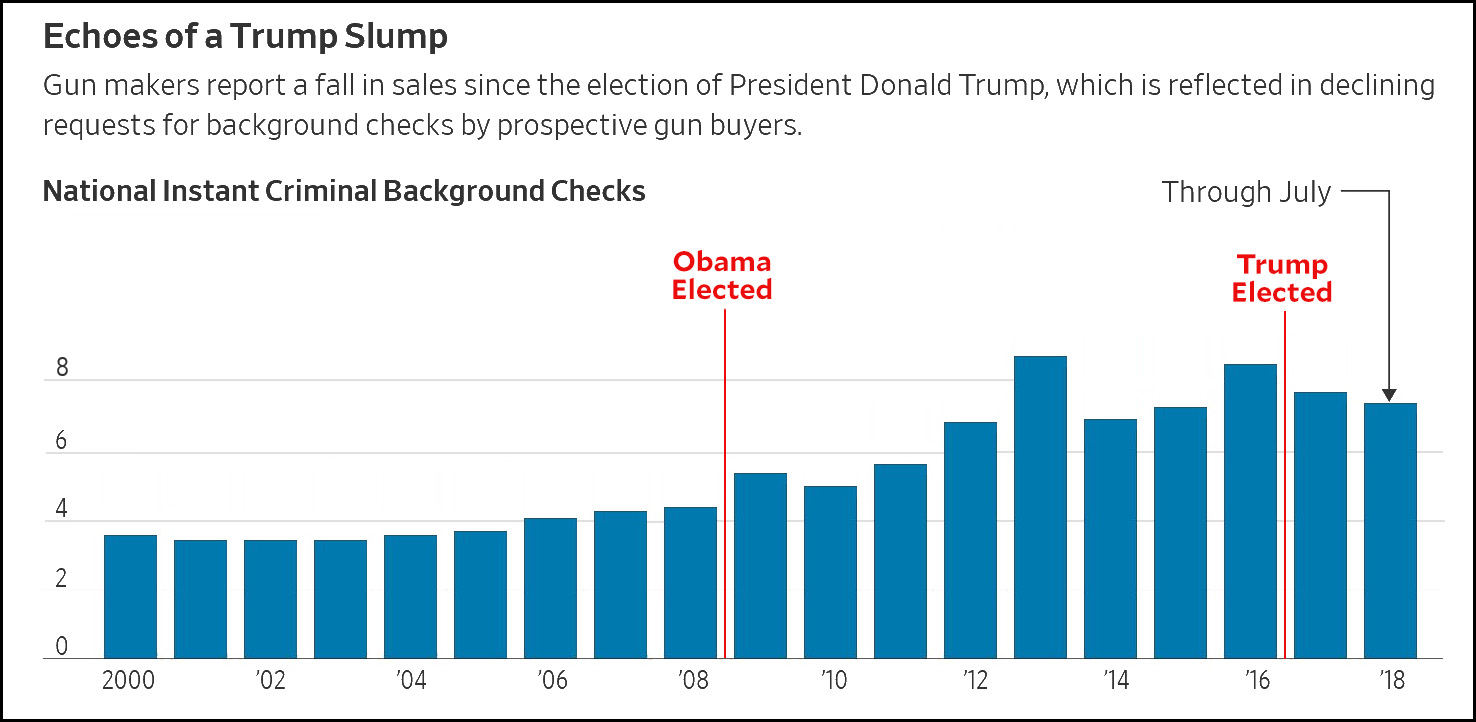Yesterday I challenged you to figure out why working-class white voters identified themselves with the Democratic Party quite stably for nearly two decades—including 2008, when about half of them voted for Obama—but then suddenly abandoned the party in big numbers starting a year after Obama was elected. The most common guess had to do with the tanking of the economy, but that doesn’t really work. There have have been good times and bad times ever since World War II, and the bad times don’t routinely cause working class whites to abandon the Democratic Party. Besides, if that were the case, you’d expect this group to steadily return to the party after about 2012, when the economy recovered. They didn’t.
No, it’s something else. To help you out, here’s another chart. It’s from the Wall Street Journal, and it shows gun sales suddenly rising starting in 2009 and then suddenly slumping after 2016. Sales were high during the Obama era, and only during the Obama era.

What could be the cause of this? Whatever could be the cause?

















